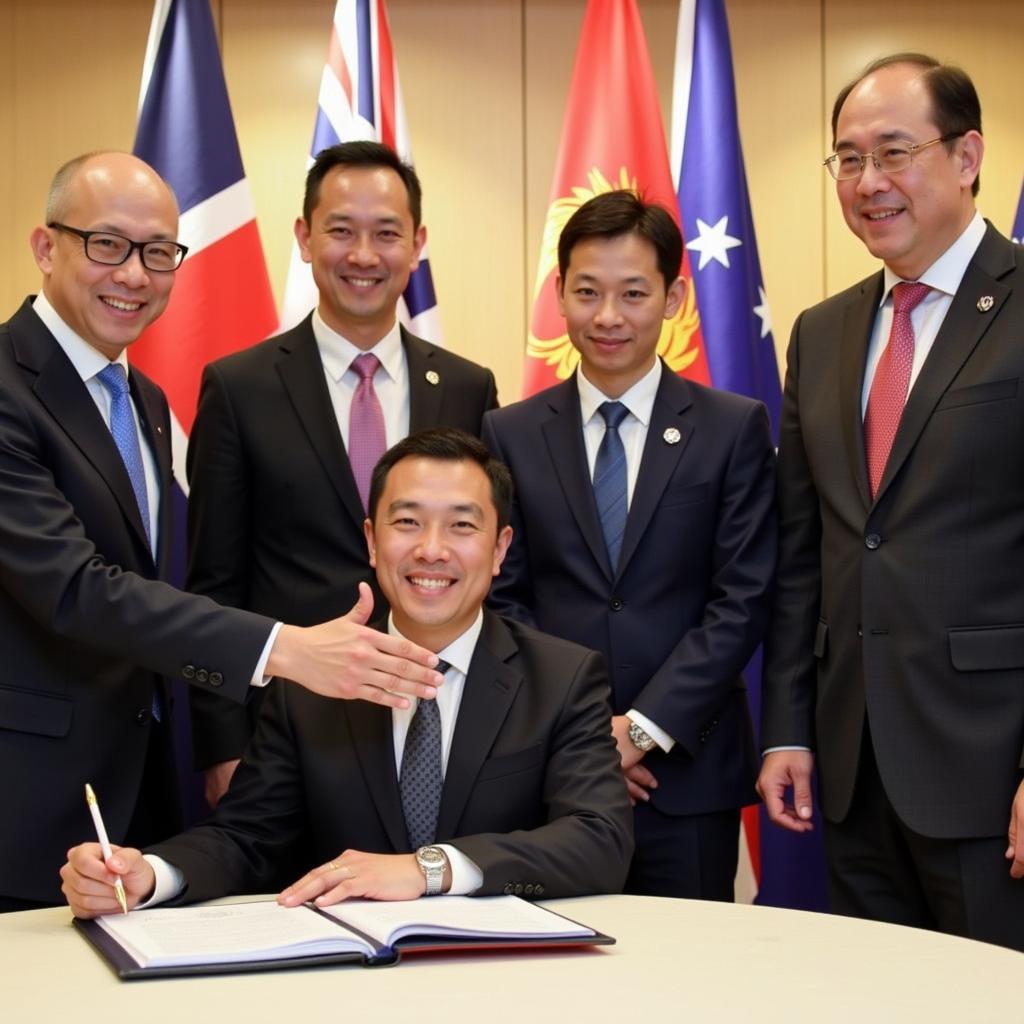The Asea Full Form, standing for the Association of Southeast Asian Nations, represents a dynamic intergovernmental organization uniting 10 Southeast Asian countries. Established on August 8, 1967, ASEAN fosters political, economic, and socio-cultural cooperation among its member states.
Delving Deeper: Understanding ASEAN’s Significance
Beyond its full form, ASEAN signifies a commitment to regional peace, stability, and prosperity. The organization plays a crucial role in:
- Promoting economic growth: ASEAN has established a free trade area, facilitating trade and investment among member states, leading to significant economic development.
- Enhancing regional security: Through dialogue and cooperation, ASEAN addresses security challenges, promoting peace and stability in Southeast Asia.
- Bridging cultural gaps: ASEAN celebrates the region’s rich cultural diversity, fostering understanding and appreciation among its people.
A Closer Look at ASEAN’s Core Principles
ASEAN’s foundations are built on key principles:
- Mutual respect for sovereignty: Recognizing the independence and territorial integrity of each member state.
- Non-interference in internal affairs: Respecting the right of each member state to manage its own domestic matters without external pressure.
- Peaceful settlement of disputes: Emphasizing dialogue and diplomacy in resolving disagreements among member states.
ASEAN’s Impact: A Transformative Force
Since its inception, ASEAN has witnessed remarkable achievements:
- Economic integration: The ASEAN Economic Community (AEC) aims to create a single market and production base, fostering regional competitiveness.
- Political cooperation: ASEAN plays a pivotal role in addressing regional issues like the South China Sea dispute through dialogue and consensus-building.
- Socio-cultural collaboration: Initiatives in education, culture, and tourism promote people-to-people connections and cross-cultural understanding.
ASEAN’s Future: Navigating Challenges, Embracing Opportunities
While ASEAN has made significant strides, challenges remain:
- Narrowing the development gap: Addressing disparities in economic development among member states remains crucial for inclusive growth.
- Managing territorial disputes: Finding peaceful resolutions to longstanding territorial claims in the South China Sea requires delicate diplomacy.
- Strengthening ASEAN’s institutional capacity: Enhancing ASEAN’s ability to effectively implement its initiatives and respond to emerging challenges is essential.
Despite these challenges, ASEAN’s future remains promising. The organization is well-positioned to leverage opportunities:
- Harnessing the digital economy: ASEAN’s youthful population and growing digital literacy present significant potential for innovation and economic growth.
- Strengthening regional connectivity: Improved infrastructure and connectivity within ASEAN will facilitate trade, investment, and tourism.
- Promoting sustainable development: Addressing climate change and environmental degradation is crucial for ASEAN’s long-term prosperity.
Conclusion: ASEAN – A Beacon of Regional Cooperation
The ASEA full form, representing the Association of Southeast Asian Nations, embodies a spirit of cooperation and unity. ASEAN has played a transformative role in Southeast Asia, promoting peace, stability, and prosperity. While challenges remain, the organization’s commitment to dialogue, collaboration, and integration positions it to effectively navigate future opportunities and cement its place as a beacon of regional cooperation on the global stage.
For support, please contact us:
Phone Number: 0369020373
Email: [email protected]
Address: Thon Ngoc Lien, Hiep Hoa, Bac Giang, Vietnam.
Our customer service team is available 24/7.

